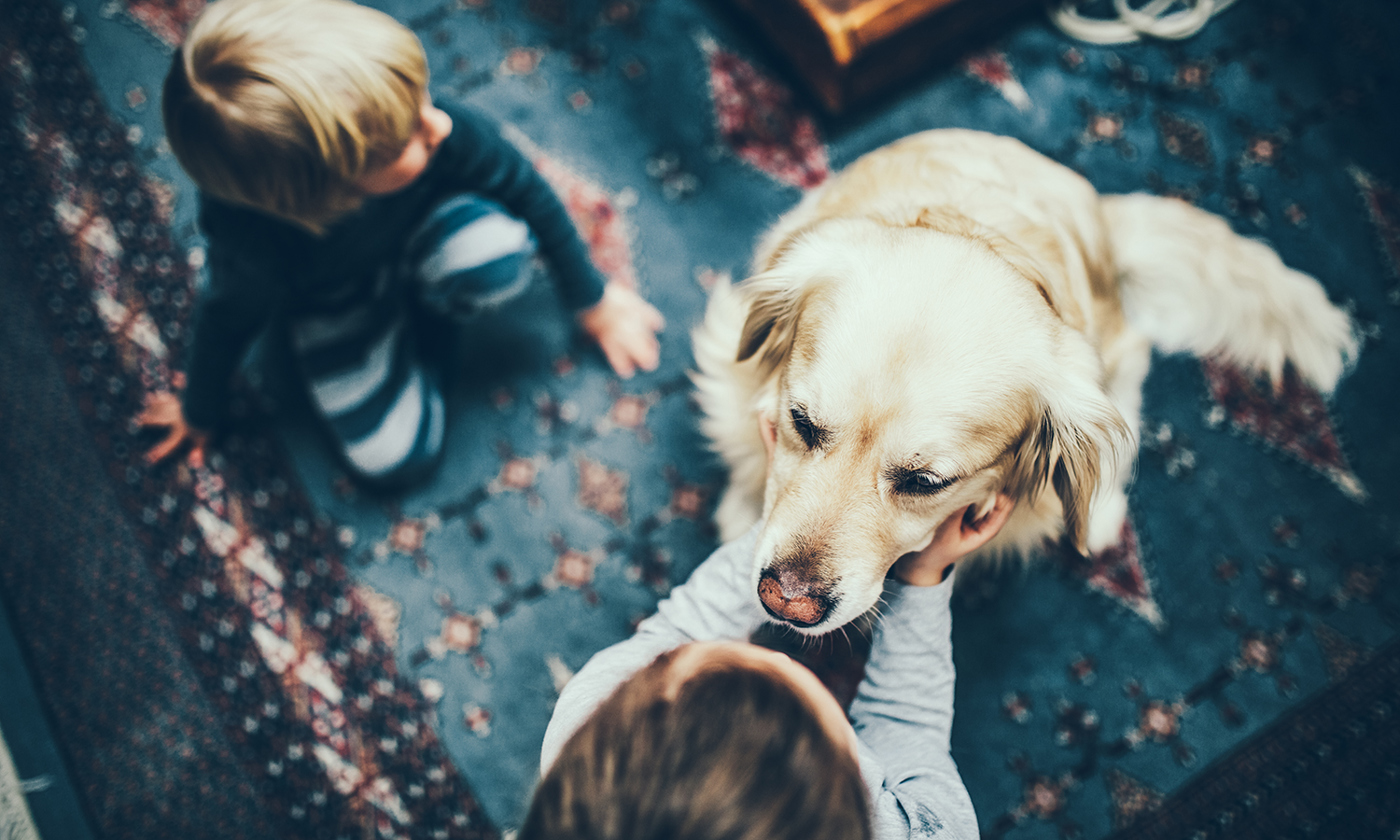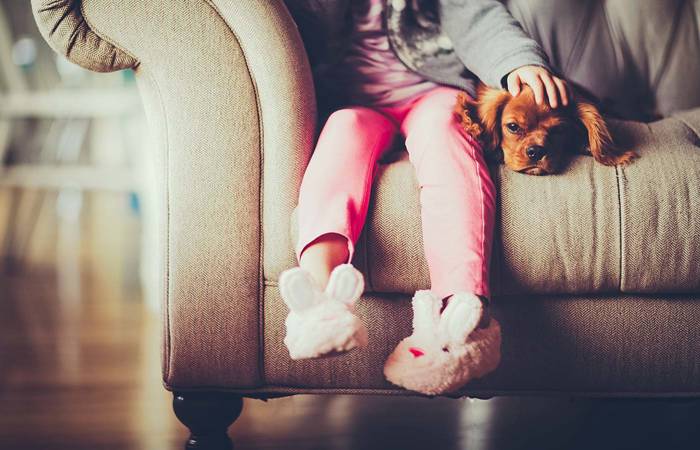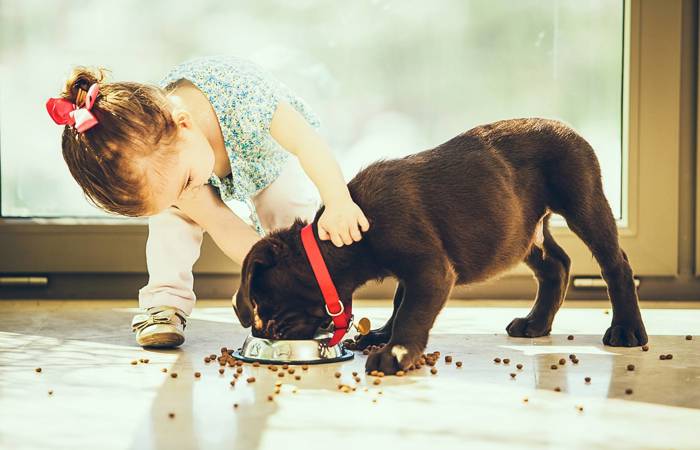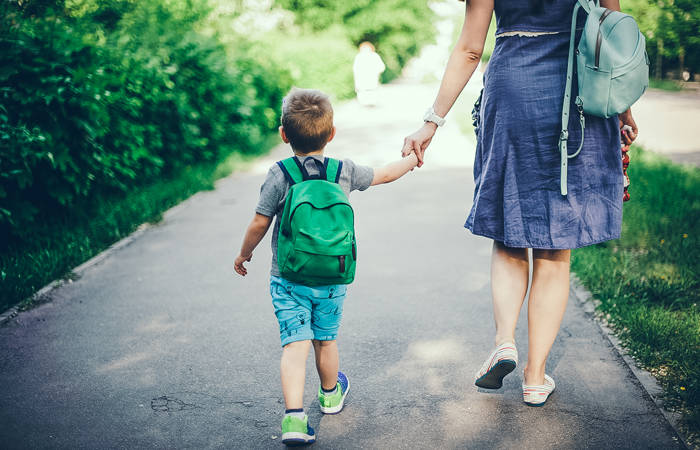Like what you see?
Sign up to receive more free parenting advice.
Thank you for subscribing to our newsletter!
Child Development

Credit: iStock.com/skynesher
Whether they are warm and fuzzy or cold and scaly, children harbour life-long memories of their family pets.
Sixty-one per cent of Australian households own a pet, and the RSPCA estimates there are more than 29 million pets in Australia. Of these, 40% are dogs, and 27% are cats, followed by fish, birds and then small mammals and reptiles.
Martin Combs is a veterinarian and a lecturer in small animal medicine at Charles Sturt University. He believes owning a pet can be very valuable for children’s development.
“Kids who have pets are more confident and experience less social anxiety – that’s really useful. Pets also help teach children about the idea of caring for something else,” he says.
Which type of pet is best?
Martin says while dogs and pets make great pets, partly due to their ability to interact with humans, there are plenty of other options for families with young children.
“Rabbits or guinea pigs – the small furries – are a great way to start with pet ownership,” Martin says.
While a guinea pig or a rabbit is usually a lot safer pet than a dog, they come with certain conditions. It’s also important to check what is legal in terms of ownership in your state or territory.
“Guinea pigs and rabbits need quite a lot of interaction to get them to be a friendly, interactive animal as they are naturally more reserved,” Martin says.
He says some species of rabbit (in particular the dwarf rabbit, which is quite a nervous animal) can become quite aggressive around children if not house trained. On the other hand, if you train them and up with interaction they are very rewarding pets.
“Rabbits can become fantastic pets, but it takes a lot of work. In Australia we think of rabbits as a pet that sits in the backyard, but they do better with daily interaction. That comes easier with being kept inside and they are simple to house train. In the UK this is quite common, but not in Australia,” Martin says.
Pets offer a wonderful learning environment for children. You can show them how you feed the pet and explain how to do it. If your child is under five I would be doing all those things with them rather than leaving them to it.Martin Combs
Stay up to date with the latest news and articles from First Five Years
Thank you for subscribing to our newsletter!
The pros and cons of dogs and cats
Dogs and cats make great pets. Kittens are particularly fun for young children but remember an adult cat may or may not be snuggly or interactive – this can vary a lot with breed or temperament.
Puppies are compelling but remember that they require a lot of training, and don’t always respond well to commands from children.
Dogs often see children as ‘part of their pack’ rather than the leader of the pack, like an adult.
“It can often be quite challenging. I’d encourage parents to make puppy training something your child participates in. You might find that when the child gives a command to the dog it won’t work, but if you let them stand next to you and give the treat when the dog sits or drops (that is, obeys the command), the dog will begin to understand that in some way the child is associated with you. Then, there will be a positive association with you both,” Martin says.
Martin also says to ensure young children don’t play competitive games with their dog; even when children are quietly playing with the dog an adult should still always be present.
“Dogs develop very quickly and can go from being a harmless puppy to a rough dog in a short period. It’s important to monitor dogs with children under ten, in particular younger children who are more susceptible to being knocked over, or may do something that elicits a negative response from your dog,” he says.
Martin recommends children shouldn’t be left alone outside playing with their dog, as nasty bites can occur.
It’s just one reason he says integrating a dog into a family with young children is easier if the dog is allowed inside: this makes it easier to monitor interactions and reduces the excitement associated with a “human coming outside” when interactions are more intermittent.
The advantages of fish and birds
Fish and birds are often seen as easy pets, and Martin agrees either is worth having.
“I know people who’ve kept birds and taught them to fly around and sit on their shoulder, while bigger parrots are highly intelligent and their interactions can be quite unique,” he says.
Fish are obviously simple for the most part but be realistic: maintenance of the tank will be a task for older children or adults. Younger children can help to feed fish, but only under supervision.
“If a child decides to feed the fish half of the container that will kill the fish. It’s important to supervise for the animal’s welfare, not just the child’s welfare,” Martin says.
Fish can also offer young children an introduction to one of the trickiest topics for parents: death.
“Don’t secretly replace a dead fish: dying is something we all need to confront. As hard as it is, a child coming to terms with the death of a pet is a wonderful way to learn about how to cope with grief. Children under seven can struggle to understand the concept, so you don’t want to make too big a thing of it. But while they may not completely understand it until later on, it can be a useful discussion to have,” Martin says.
Helping young children become responsible for their pet
While it’s important parents don’t have unrealistic expectations of young children, there are still plenty of ways to instil responsibility for pet care by taking small steps.
“Pets offer a wonderful learning environment for children. You can show them how you feed the pet and explain how to do it. If your child is under five I would be doing all those things with them rather than leaving them to it,” says Martin.
It’s also important to maintain good pet health.
“Ensuring your pet is vaccinated and dewormed will reduce the chance of infections crossing between your pet and your child," says Martin.
Remember, some birds carry disease – so no kissing. Talking to your vet is a good way to learn how to keep your pet and the family healthy and safe.
Top tips for pet ownership:
- Guinea pigs and rabbits can be quite interactive if you train them and get them used to being around people. Consider having them living inside the house rather than just in the back yard.
- It is much easier to supervise a dog around young children if it is allowed inside the house. This is important given that over 12,000 Australians were hospitalised last year due to a dog bite, with a similar number again requiring treatment for dog bite injuries.
- If you are integrating a new pet into a house where there are already other pets, remember it’s an adaptation process. It will take time for the animals to learn to understand each other and respect each other’s space.







